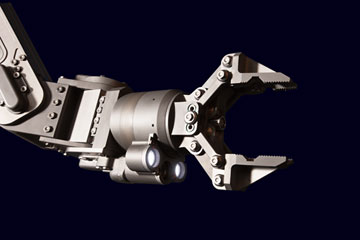
(4 of 6)
A distinction made by Frank Levy of MIT and Richard Murnane of Harvard, a pair of economists who have studied the impact of automation on human employment, helps explain the next phase of the Great Restructuring. If your job involves learning a set of logical rules or a statistical model that you apply to task after task--whether you are grilling a hamburger or issuing a boarding pass or completing a tax return--you are ripe for replacement by a robot. As computing power continues to increase and code writers continue to work their binary miracles, more and more occupations will fall into that category. We will see more robots in teaching, sales, nursing, stock trading--and journalism too.
The surviving jobs will be of three kinds, Levy and Murnane predict: solving unstructured problems, working with new information and carrying out nonroutine manual tasks. It's hard to design a suitable robot to style hair, fix plumbing problems, design buildings or plot corporate strategy. A computer might be able to write a routine contract, but attorneys who can write persuasive legal briefs will be in demand for the foreseeable future.
I wondered how the same question might look to someone whose business is robots. So I reached out to the editor in chief of the Journal of Field Robotics, Sanjiv Singh, a longtime faculty member at the cutting-edge Robotics Institute of Carnegie Mellon University. Field robotics means exactly what it sounds like: the study of real-world applications for the theoretical investigations of other scientists and engineers. In his workshop, Singh has tackled a wide range of applications. He spent one patch of his career applying robotics to harvesting fruit. Currently, he's perfecting large-scale autonomous air vehicles, which he helpfully translated as "giant helicopters that can fly by themselves."
Interestingly, Singh endorses a number of Welch's ideas. "It takes a long time to develop these technologies," he says, and the idea of robots as artificial humans is not something he expects to see. Instead, he thinks of humans and robots primarily as collaborators. Robotic devices can relieve people of jobs that are "dull, dangerous, dirty," whether those jobs are on mind-numbing assembly lines or involve tasks in unpleasant environments, like clearing land mines or welding on the ocean floor. (A major robotics competition this year, sponsored by the Department of Defense, will produce a humanoid robot designed to climb ladders, patch leaks and shut off valves at disaster sites like the Fukushima Daiichi nuclear power plant in Japan.)
In other cases, technology can enhance people's ability to perform tasks. Rather than imagine a day when truck drivers are obsolete, Singh prefers to think about ways that sensors designed for robotic applications can support safer driving by humans. "I recently bought a Volvo with an optional drowsy-driver detector," he says. "It beeps at you if you start to veer. That's not what laypeople think of when you talk about robotics, but it is from our perspective."
